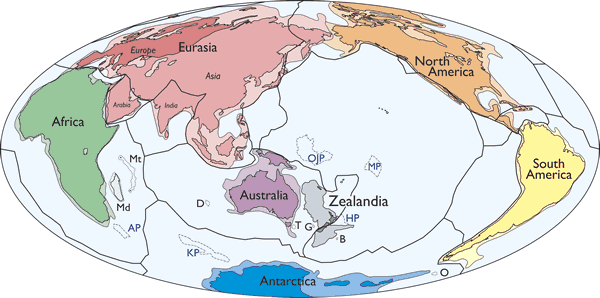Geologists hail 'Zealandia' – the lost continent the size of India beneath the sea
The '8th continent' is 5m km2 in size but only just visible above sea level.
Geologists say that New Zealand is actually a whole continent in its own right – called Zealandia – the vast majority of which lies below sea level and has been overlooked for many years.
Zealandia is more than 4.9 million sq km in size, about the size of India, but 94% of it is under water. It should still be seen as a continent because of its distinct composition, researchers say. It is made up of continental crust – the same as all the large land masses on Earth – rather than oceanic crust that lies underneath the much of the world's sea. The crust here is thicker than the surrounding area and it is clearly distinct from the surrounding regions.
"Zealandia illustrates that the large and the obvious in natural science can be overlooked," state the authors of a paper in the geological journal GSA Today.
The land mass constituted roughly 5% of the ancient supercontinent of Gondwana hundreds of millions of years ago, and began to break apart from Gondwana in the Late Cretaceous.
After the break up of Gondwana, the Earth's crust began to thin around Zealandia, flooding the area and eventually leaving just the islands of New Zealand exposed above the surface of the sea.

"The identification of Zealandia as a geological continent, rather than a collection of continental islands, fragments, and slices, more correctly represents the geology of this part of Earth," the authors write.
The seven other established continents differ from Zealandia in that the majority of those continents are above sea level. They are surrounded by 'continental shelves' – areas of crust that are still continental but submerged below sea level. In prehistoric times, such as in the last Ice Age, much of these areas were also above sea levels, which were much lower than today.
However, this difference isn't enough to disqualify Zealandia from being a continent, the study authors argue, because it is a matter of degree rather than a fundamental difference.
"To date, Zealandia is little-mentioned and/or entirely overlooked in comparative studies of continental rifting and of continent ocean boundaries," the authors write. Including Zealandia in investigations could give a boost to the field of tectonic research and lead to new discoveries of how the plates interact with each other.

© Copyright IBTimes 2025. All rights reserved.





















